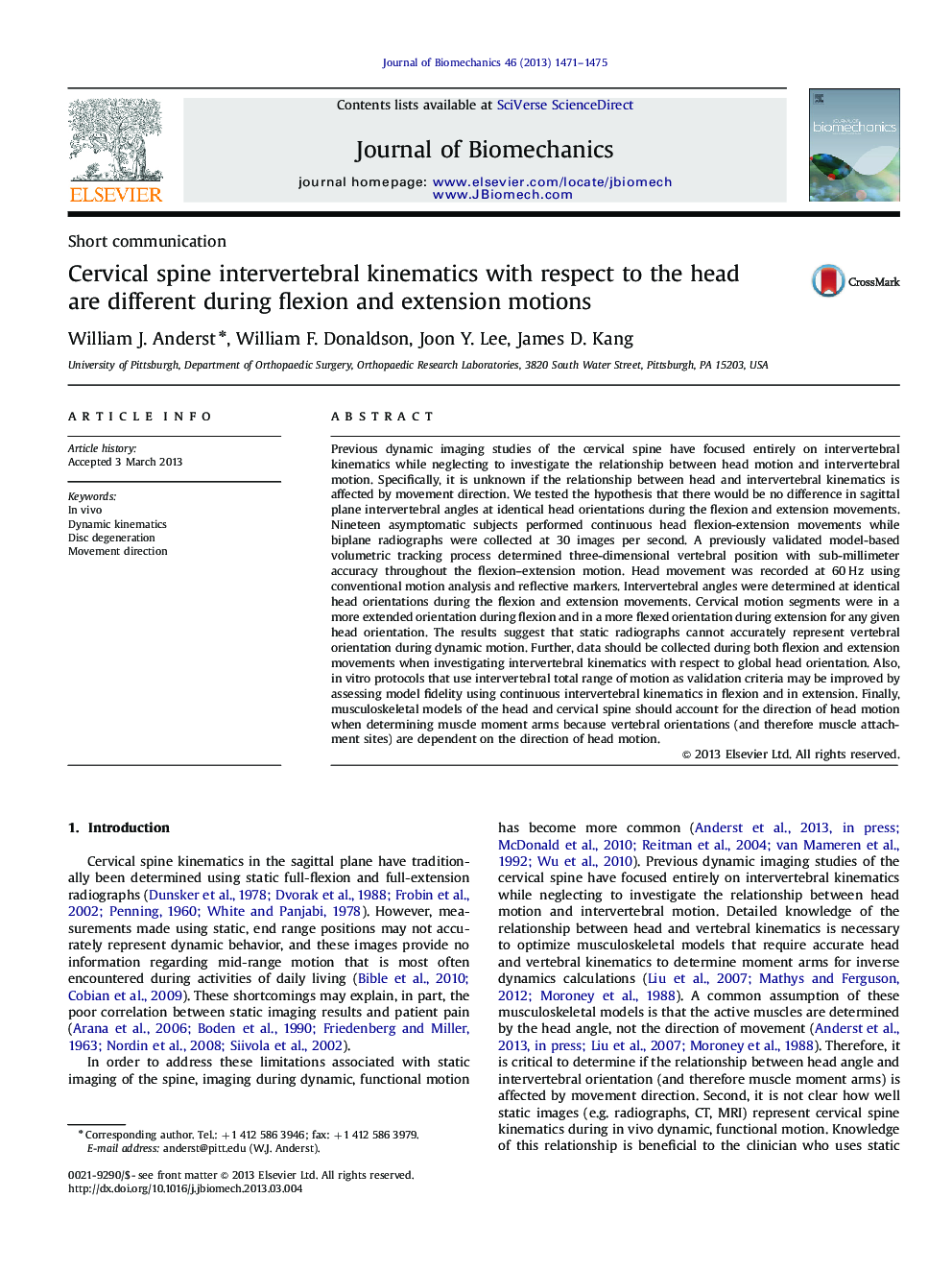| کد مقاله | کد نشریه | سال انتشار | مقاله انگلیسی | نسخه تمام متن |
|---|---|---|---|---|
| 10432572 | 910252 | 2013 | 5 صفحه PDF | دانلود رایگان |
عنوان انگلیسی مقاله ISI
Cervical spine intervertebral kinematics with respect to the head are different during flexion and extension motions
ترجمه فارسی عنوان
سینماتیک بین مهره ای ستون فقرات گردن رحم نسبت به سر در طول حرکات فلزی و فرمت متفاوت است
دانلود مقاله + سفارش ترجمه
دانلود مقاله ISI انگلیسی
رایگان برای ایرانیان
کلمات کلیدی
موضوعات مرتبط
مهندسی و علوم پایه
سایر رشته های مهندسی
مهندسی پزشکی
چکیده انگلیسی
Previous dynamic imaging studies of the cervical spine have focused entirely on intervertebral kinematics while neglecting to investigate the relationship between head motion and intervertebral motion. Specifically, it is unknown if the relationship between head and intervertebral kinematics is affected by movement direction. We tested the hypothesis that there would be no difference in sagittal plane intervertebral angles at identical head orientations during the flexion and extension movements. Nineteen asymptomatic subjects performed continuous head flexion-extension movements while biplane radiographs were collected at 30 images per second. A previously validated model-based volumetric tracking process determined three-dimensional vertebral position with sub-millimeter accuracy throughout the flexion-extension motion. Head movement was recorded at 60Â Hz using conventional motion analysis and reflective markers. Intervertebral angles were determined at identical head orientations during the flexion and extension movements. Cervical motion segments were in a more extended orientation during flexion and in a more flexed orientation during extension for any given head orientation. The results suggest that static radiographs cannot accurately represent vertebral orientation during dynamic motion. Further, data should be collected during both flexion and extension movements when investigating intervertebral kinematics with respect to global head orientation. Also, in vitro protocols that use intervertebral total range of motion as validation criteria may be improved by assessing model fidelity using continuous intervertebral kinematics in flexion and in extension. Finally, musculoskeletal models of the head and cervical spine should account for the direction of head motion when determining muscle moment arms because vertebral orientations (and therefore muscle attachment sites) are dependent on the direction of head motion.
ناشر
Database: Elsevier - ScienceDirect (ساینس دایرکت)
Journal: Journal of Biomechanics - Volume 46, Issue 8, 31 May 2013, Pages 1471-1475
Journal: Journal of Biomechanics - Volume 46, Issue 8, 31 May 2013, Pages 1471-1475
نویسندگان
William J. Anderst, William F. Donaldson, Joon Y. Lee, James D. Kang,
